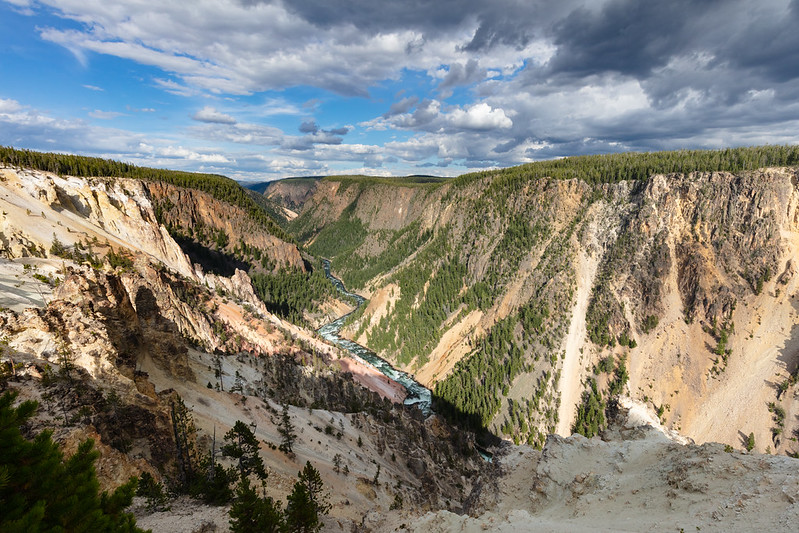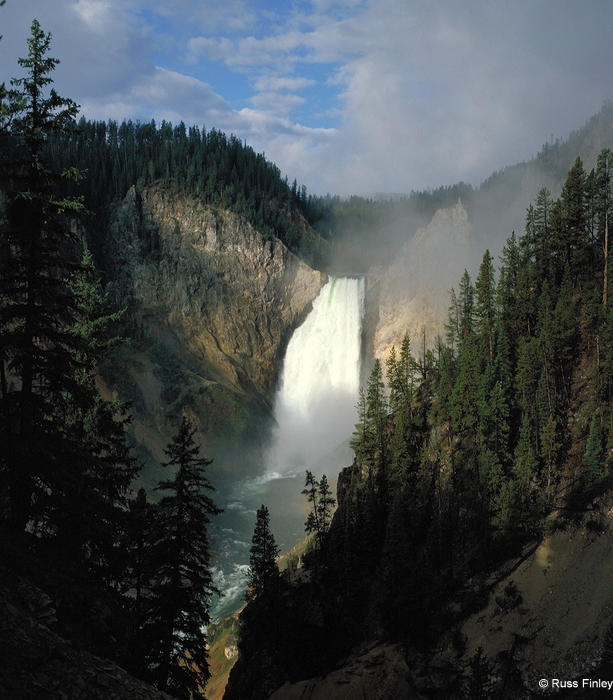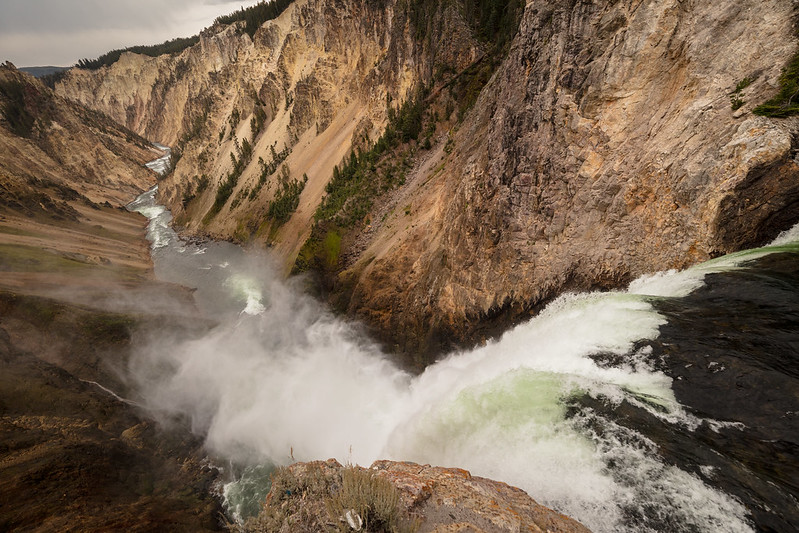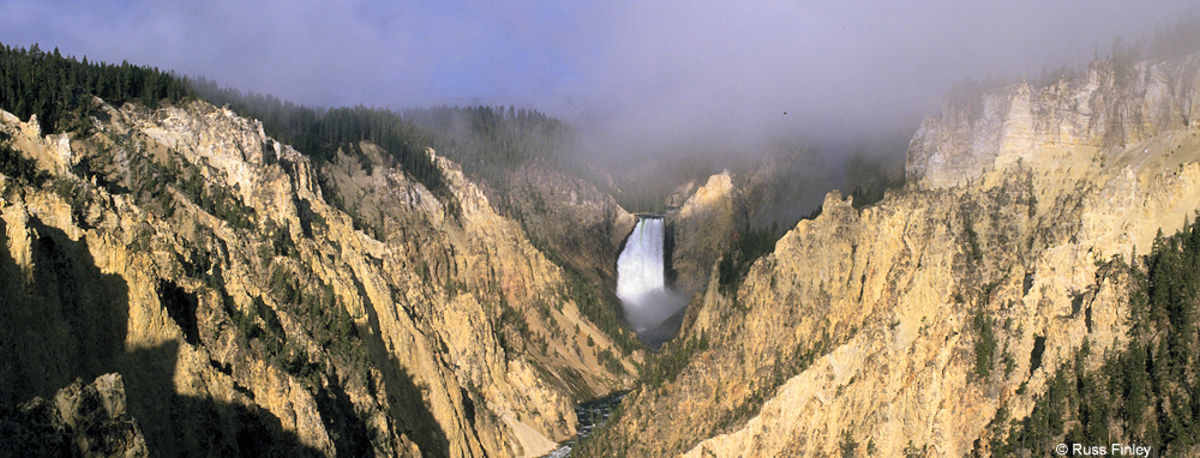How to Get There
The Lower Falls area is located just to the east of Canyon Village. A one-way loop drive takes you to the brink of the Grand Canyon and offers four views, with the last stop at the trail that leads to the top of the Falls.
Brief Description
Lower Falls, the biggest waterfall in Yellowstone, is the most famous in the Park, hands down. In fact, the 308-foot tall waterfall it is most likely the second most photographed spot in Yellowstone, with Old Faithful Geyser being the first. There are numerous views of the Falls from both the east (Inspiration Point, Grandview Point and Lookout Point) and west (Artists Point) sides of the Grand Canyon, most of which require only a short walk or virtually no walk to see. The trail to the top of the Falls (3/4 of a mile roundtrip, but steep with many switchbacks) is a must, as the experience of standing atop the Falls is one of the most breath-taking experiences in the entire Park.
The canyon’s colors were created by hot water acting on volcanic rock. It was not these colors, but the river’s yellow banks at its distant confluence with the Missouri River, that occasioned the Minnetaree Indian name which French trappers translated as roche jaune, yellow stone. The canyon has been rapidly downcut more than once, perhaps by great glacial outburst floods. Little deepening takes place today.

Inspiration Point
A member of the Washburn party in 1870, Nathanial P. Langford, used these words to describe his visit to this point:
“The place where I obtained the best and most terrible view of the canyon was a narrow projecting point situated two to three miles below the lower fall. Standing there or rather lying there for greater safety, I thought how utterly impossible it would be to describe to another the sensations inspired by such a presence. As I took in the scene, I realized my own littleness, my helplessness, my dread exposure to destruction, my inability to cope with or even comprehend the mighty architecture of nature.”

Lookout Point
This was a popular lookout for many early visitors to the park. Noticing that it got regular visitation, in 1880 Superintendent P.W. Norris built a railing here and the location has been called Lookout Point ever since. It is likely that this was the superintendents preferred name for the spot. It had been called many things prior to 1880 including Point Lookout, Lookout Rock, Mount Lookout, and Prospect Point.
Brink of the Lower Falls

Over the years the estimates of the height of this falls has varied dramatically. In 1851 Jim Bridger estimated its height at 250 feet. One outrageous newspaper story from 1867 placed its height at “thousands of feet”. A map from 1869 gives the falls its current name of Lower Falls for the first time and estimates the height at 350 feet.
It mattered little how tall the observers thought the falls was. They consistently write journal entries that comment on its awe-inspiring nature. A member of the 1870 Washburn party N. P. Langford gave this brief but poetic description: “A grander scene than the lower cataract of the Yellowstone was never witnessed by mortal eyes.”
Reader Contribution
“Without hesitation I would say that the Lower Falls is by far my favorite waterfall in Yellowstone. Lower Falls is both breath-taking and beautiful as well as extremely powerful and commands a great amount of respect. The truly great aspect to Lower Falls is the ability to see it from several distinct vantage points. One can view the falls in a quiet solitude from Artist Point as the water drops 308 feet into the mist below or journey to the top of the falls and feel its extreme power, commanding respect, and intense roar as it drops into the rainbow of mist beneath. Uncle Tom’s Trail as well as the North Rim Trail both offer spectacular sights too. The Lower Falls below a full moon night cannot be forgotten. When the moon is so bright that it seems like daylight, the canyon’s rocky walls are illuminated a pasty yellow, white, orange, and a hint of red. In the distance Lower Falls can be heard plunging its’ 308 feet into the darkness as the moon continues to shine. Another aspect of Lower Falls which is so beautiful and intriguing is the powerful rumble in produces even at unseen distances. When I arrived within the borders of Yellowstone in May of 1998 the Lower Falls was my first destination. As I walked the ‘P’ trail, which connects the Canyon lodges to Grandview lookout, I had butterflies in my stomach as I turned to see the majesty of the Lower Falls once again. And then I heard its faint rumble as I turned a corner and I was in ecstasy.” — Justin Mattson is from Wheaton, Chicago. He has traveled most of the lower United States, and has been to Yellowstone three times.

2 thoughts on “LOWER FALLS”
Comments are closed.